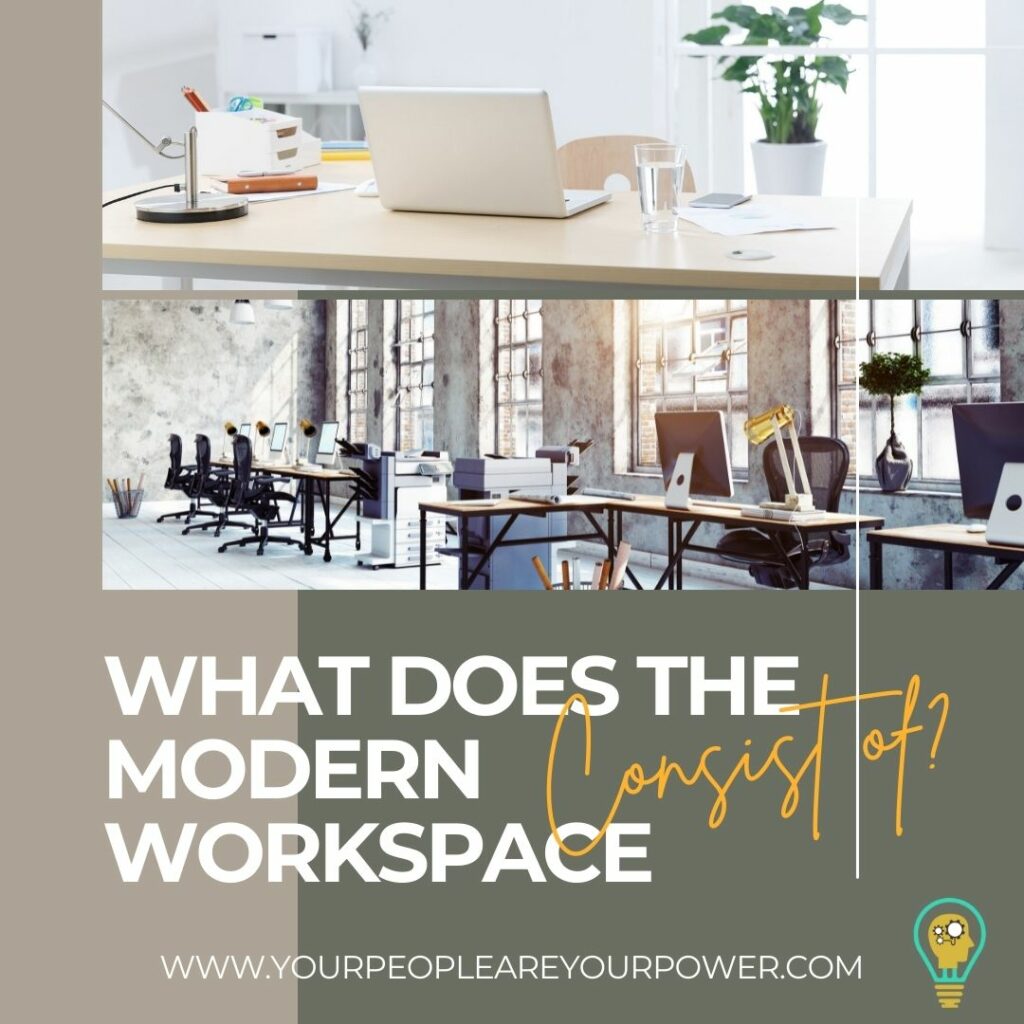What does the modern workplace consist of?

Since March 2020, the definition of the ‘workplace’ has shifted dramatically. We have gone from the ‘traditional’ 9-5 to more flexible routines such as working from home and reduced hour contracts. There have been advantages and disadvantages to workers, but how have they adapted to the new ‘modern’ workplace?
Modern Workplace Alliance defines the ‘modern workplace’ as: ‘organisations who recognise digital collaboration, technology and tools as the way of the future’.
The modern workplace is defined to put employees and their resources first, to enable productivity and efficiency whether that be in the office space or remotely.
Employees and their independence
We are seeing more and more employees creating more flexible work routines; they essentially have gained the power to choose where they work. This might be a local cafe, their home or acquiring access to a co-working space. Working independently can certainly have its benefits, including productivity levels. However, Forbes argues: ‘human connection breeds innovation and it’s this innovation that drives our economy forward’. Our society feeds off social interaction, therefore independent working can have an isolating effect on our positivity, motivation and mental health.
Co- working spaces can have huge social and mental health benefits. Workers are not only surrounded by individuals working within different sectors, but by differing ideas and an opportunity to network with new and exciting people. This may be for business or for personal pleasure. MindWise highlights: ‘ a review of 148 studies indicated that the individuals with stronger social relationships have a 50% increased likelihood of survival’. Social interaction has been proven to increase our mental health and positivity, especially within the uncertainty of the Pandemic. The workplace culture is integral to maintaining social relationships and the efficiency of working life.
Advancement of technology and flexible working
In the 21st century the workplace has transitioned as technology has developed. New computing systems and softwares has made working life easier and more efficient for companies. Without the importance of technology today, the ‘modern workplace’ would not be what it is. More people are working from home, using more advanced technology and remote systems such as Zoom and Microsoft Teams.
Google took the initiative of more remote working during the current Pandemic by giving employees $1000 allowance to ‘upgrade’ their home working environment with technology. By giving their employees this incentive makes them feel cared for by their employers, as both their health and wellbeing are being considered. In exchange for this, a more tech-savvy home work space will make workers efficient and productive for the benefit of the employer; an advantageous situation for both parties.
Has productivity increased or decreased during the Pandemic?
As remote and flexible working patterns have become more prominent in working culture, the question of productivity remains prevalent. Has it decreased or increased whilst the workplace has changed over the Pandemic?
Harvard Business Review argues: ‘it depends on the company[…]most are less productive now than they were 12 months ago. The key difference between the best and the rest is how successful they were at managing the scarce time, talent and energy of their workforces before COVID-19’. Investing the time and resources into your workforce can heavily impact their productivity. Managing the time and energy of each employee effectively has been proven to make workers ‘40% more productive’.
Individual mental health has also had a massive impact on productivity levels and efficiency. This could be from a variety of factors, such as the heavy social isolation of the Pandemic both personally and professionally. A survey by Deloitte discussing worker wellbeing and remote working highlights: ‘38% of workers say lockdown has had a negative impact on their wellbeing’. Being resilient to workers’ mental and emotional needs can also help productivity levels. If workers’ bodies and minds are being nurtured, they will feel more valued and engaged in their productivity and work.
Implementing health and wellbeing schemes in to the workplace
Since the start of the Pandemic and even before, companies have made it integral to their workplace culture to implement health and wellbeing schemes. This puts employees wellbeing first, as they are the most valuable asset to your company.
Workplace wellbeing and its potential is increasing, especially due to what workers expect to receive in return for their productivity and engagement. Workers will remain increasingly engaged in their workload if their wellbeing is being considerated.
Wellbeing People states: ‘1 in 7 people experience mental health issues in the workplace’. Companies are combating mental health and wellbeing by incorporating different schemes such as flexible working, a ‘mental health day’, yoga and mindfulness courses and social, informal events in the workplace.
The most significant feature of the ‘modern workplace’ is the importance of wellbeing. Employers have recognised and invested in educating themselves on mental health and workplace cultures. A stressful workplace culture can increase stress and absenteeism, however transforming the workplace into a mindful and open environment is integral to the future of the workforce and your company’s culture.
Recent Posts
- Unilever Focusses on the Power of Purpose: 🌍 YPP Spotlight 8 July 2025
- Corporations Fit For The Future: Three Women. One Mission. 5 July 2025
- KPMG’s Wellbeing Blueprint: 🌍 YPP Spotlight 30 June 2025
- Microsoft’s Culture Of Inclusive Allyship Leads The Way: 🌍 YPP Spotlight 24 June 2025
- How remote-first tech powerhouse, Atlassian, strives to build a Global Culture of Care, one Wellness Day at a time 16 June 2025
Today a reader,tomorrow a leader!